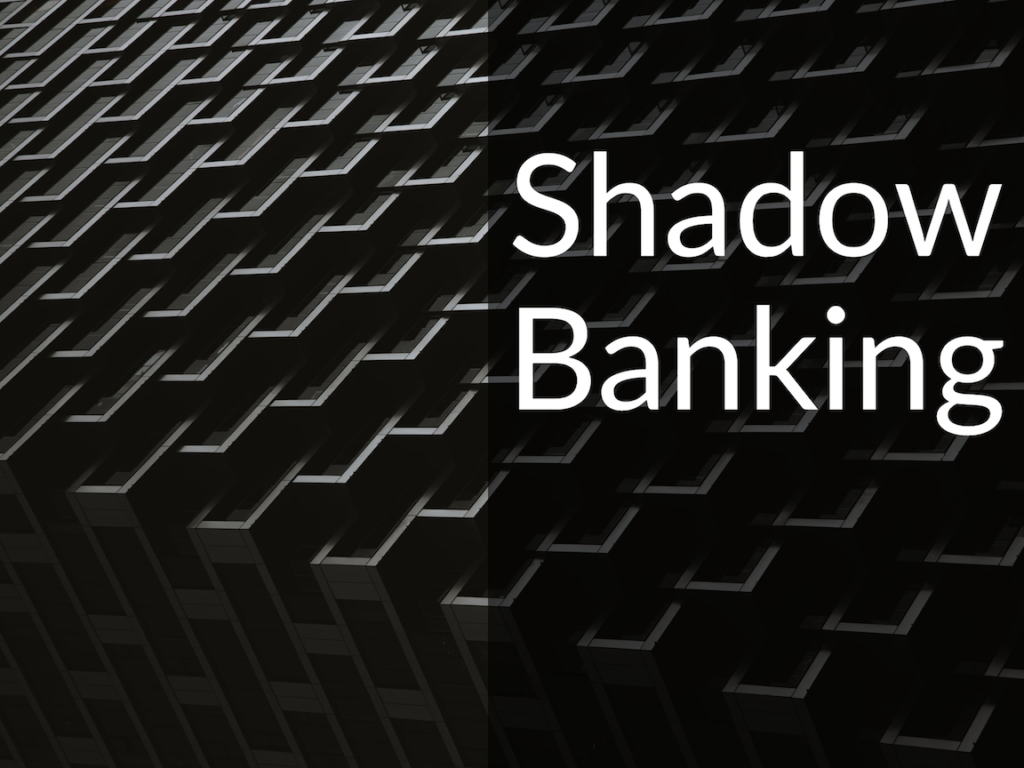Half of the global financial system’s assets belong to shadow banks. You have probably already used one. What are shadow banks and what to be wary of when using them.

Topics covered include:
- What are the roles of shadow banks
- What are examples of shadow banks
- How two shadow banks, Greensill Capital and Archegos Capital Management, contributed to billions of dollars in losses
- How China’s massive use of shadow banks differs from the rest of the world
- How individuals investors can benefit from the careful use of shadow banks.
Show Notes
Q+A-What is shadow banking and why does it matter? by Michelle Martin—Reuters
What You Need to Know About the Shadow Banking System Now by Craig Kirsner—Kiplinger
Global Monitoring Report on Non-Bank Financial Intermediation 2020—Financial Stability Board
How fintech will eat into banks’ business—The Economist
Why is supply-chain finance, as practised by Greensill Capital, risky?—The Economist
Archegos avalanche shows cracks are hidden under the surface by Gillian Tett—Financial Times
Optimal Shadow Banking by Zehao Liu and Jinfan Zhang
BlockFi Botches Promo With Outsized Bitcoin Reward Payments by Benjamin Powers—Coin Desk
Episode Sponsors
Clear – Use code David for two months free
Related Episodes
304: A 15% Guaranteed Return? Lending on the Fringes of Finance
333: How The Covid Shock Nearly Destroyed The Financial System
339: How To Make Money with BlockFi, Dai and the Evolving DeFi Ecosystem
431: The Long-term Bullish Case for Gold
Transcript
Welcome to Money For the Rest of Us. This is a personal finance show on money, how it works, how to invest it, and how to live without worrying about it. I’m your host, David Stein. Today’s episode, 344. It’s titled “Why you should care about shadow banking.”
What Is Shadow Banking?
Shadow banking is not something that I have spoken about specifically on the podcast, although we have discussed numerous investments in other vehicles that are a form of shadow banking. Cryptocurrency lending is shadow banking. Investing in a money market mutual fund is shadow banking. Lending or borrowing on peer-to-peer lending platforms is shadow banking. There are many different types. In fact, shadow banking makes up half of the global financial system, according to the Financial Stability Board.
What exactly is shadow banking? Shadow banks are entities that perform some function of traditional banks, but they are much less regulated. They don’t offer depository insurance in case they go bankrupt. Nor do the shadow banks maintain accounts at the central bank, so they don’t get access to central bank funding in its role as lender of last resort.
The Financial Stability Board, which is an international body that monitors and makes recommendations about the global financial system—it’s made up of treasury and central bank officials around the world. They do an annual report on what they call non-bank financial intermediation (NBFI), which is a fancy name for shadow banking.
In their most recent report, they pointed out that the NBFI sector—shadow banks—account for 49.5% of the global financial system. That’s at year-end 2019. And it compares to 42% in 2008.
Shadow Bank Functions
Shadow banks have a number of functions that they play in the economy. The first is as savings and investment vehicles, an investment in a money market mutual fund. A topic that we discussed in-depth in episode 333, “How the Covid shock nearly destroyed the financial system”—that’s an investment in a shadow bank. It’s a saving vehicle, but it’s not FDIC-insured. There is no depository insurance.
Hedge funds are shadow banks. Fixed income funds are a type of shadow bank because they’re lending to corporate entities outside of the traditional banking sector. The primary risk for this savings and investment function of shadow banks are runs on the banks if depositors decide that they wanna pull their money quickly. And that stress can cascade through the system. That was one of our discussion points in episode 333, how the central banks had to step in and provide liquidity and guarantees for the money market accounts so that they were protected and there was not a bank run.
A second economic function of shadow banks is lending. And with any type of lending activity, there’s credit risk, defaults. And there’s liquidity risk because oftentimes the shadow bank is borrowing short-term and lending long-term. And again, they could be susceptible to bank runs.
An example of shadow bank lending activities is supply chain finance, where companies borrow from the supply chain financier to produce and ship goods. We’ll give a detailed example of that in a few minutes.
Prime brokers that lend to hedge funds is an example of a shadow bank. Non-bank home mortgage lenders, like Quicken Loans, which is one of the largest mortgage originators in the U.S. is not a bank. It’s a non-bank, it’s a shadow bank. Payday loan companies are a type of shadow bank.
As a Money For the Rest of Us Plus member, you are able to listen to the podcast in an ad-free format and have access to the written transcript for each week’s episode. For listeners with hearing or other impairments that would like access to transcripts please send an email to jd@moneyfortherestofus.com Learn More About Plus Membership »
